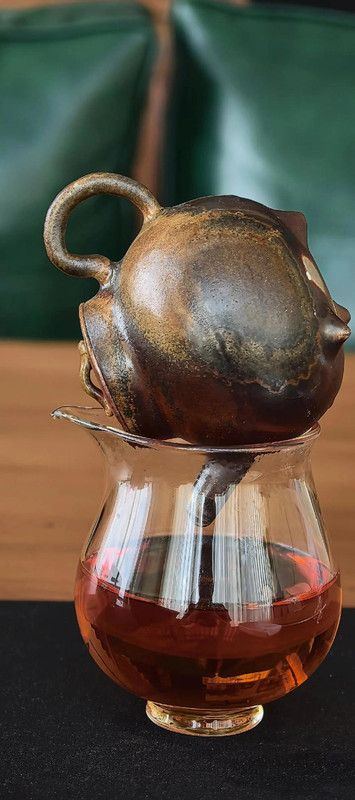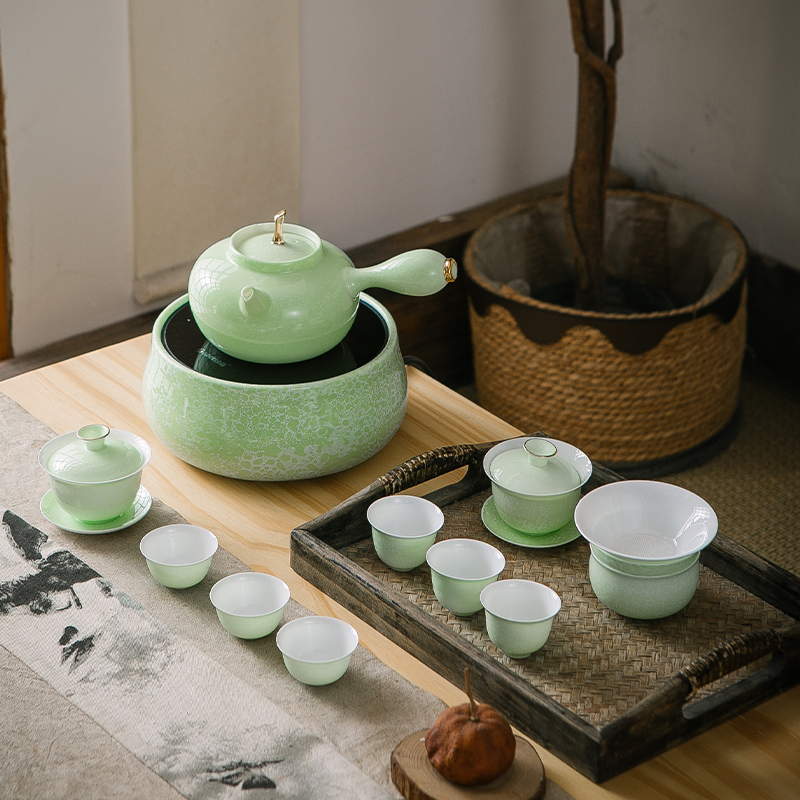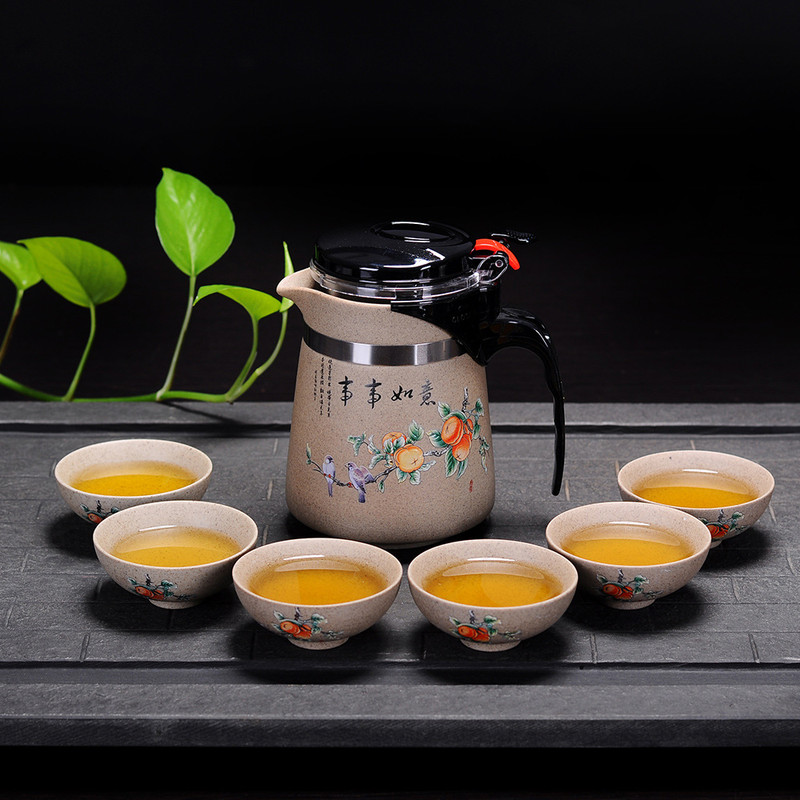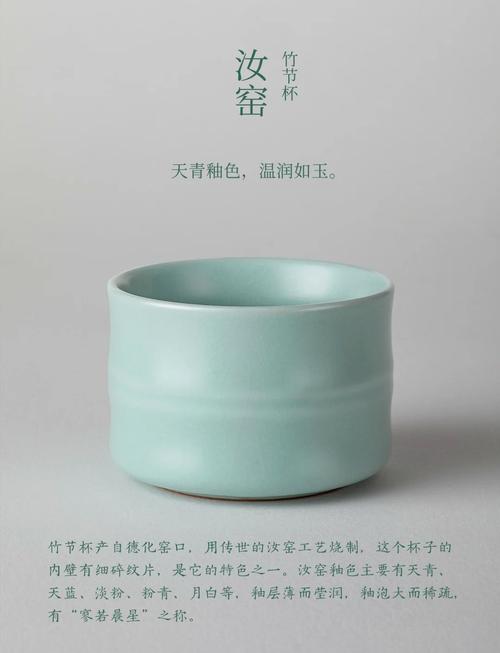Oolong tea, a category of semi-fermented marvels, bridges the gap between green and black teas with its kaleidoscope of flavors—from floral and green to toasty and robust. Whether it’s a high-mountain Tieguanyin with orchid notes or a deeply oxidized Da Hong Pao with mineral depths, oolong demands teaware that elevates its layered aromas and textures. The right tools can transform a casual sip into a journey through terrain and craftsmanship. Here’s how to choose wisely.

1. Yixing Clay Pots: The Soul of Traditional Brewing
In Wuyi Mountain tea ceremonies, Yixing zisha clay pots are revered as the ultimate vessels for oolong. Their porous, unglazed interior “breathes” with the tea, absorbing its essence over time to deepen complexity.
Why They Shine:
- Flavor Seasoning: Yixing’s micro-pores gradually mellow tannins and enhance body, making aged oolongs sing.
- Heat Retention: Thick clay keeps water hot during long infusions, essential for extracting full flavor from rolled leaves.
- Cultural Pedigree: These pots have been prized since the Ming Dynasty for their ability to “age” tea flavors like fine wine.
Pro Tip: Use a dedicated pot for each oolong type (e.g., one for roasted Tieguanyin, another for floral Phoenix Dan Cong) to avoid flavor crossover.
2. Porcelain Gaiwans: Versatility Meets Precision
For tea explorers, porcelain gaiwans offer a neutral canvas to dissect oolong’s nuances. Their wide opening and lid allow you to inspect leaf quality, while the non-porous material ensures no interference with delicate aromas.
Advantages:
- Aroma Amplification: Lift the lid to inhale the tea’s evolving fragrance—from honeyed to roasted to faintly fruity.
- Temperature Control: Porcelain retains heat moderately, preventing scalding in lightly oxidized oolongs.
- Ritual Appeal: The gaiwan’s simplicity invites mindfulness, whether brewing alone or sharing.
Pairing Suggestion: Use a 150–200ml gaiwan for 5–7 grams of tea, adjusting steeping time (5–30 seconds) to unlock flavor layers.
3. Glass Teapots: A Modern Showcase for Visual Drama
For oolongs with striking leaf aesthetics—like the tightly rolled “dragonfly heads” of Dongding or the emerald strips of Ali Shan—glass teapots turn brewing into a performance.
Key Features:
- Heat Resistance: Borosilicate glass withstands boiling water without warping.
- Flavor Neutrality: Glass won’t absorb or alter the tea’s profile, ideal for assessing quality.
- Aesthetic Drama: Pair with a tea warmer to maintain temperature during leisurely sessions.
Pro Tip: Serve in hand-blown glass cups to admire the tea’s gradient hues from golden amber to jade green.
4. Thick-Walled Ceramic Cups: For the Bold and Earthy
In Taiwan, where high-mountain oolongs reign, thick-walled ceramic cups are favored for their ability to retain heat and soften astringency.
Why They Work:
- Temperature Stability: Insulating ceramic keeps tea warm during slow sips.
- Mouthfeel Enhancement: The cup’s weight and texture contrast beautifully with oolong’s silkiness.
- Rustic Charm: Unglazed stoneware cups, often hand-thrown, add earthy authenticity to the ritual.
Pairing Suggestion: Match a rough-hewn cup with a roasted oolong for a tactile and gustatory dialogue.
5. Silver Teaware: Luxury and Functionality
In Middle Eastern and Tibetan traditions, silver teapots and kettles are prized for their ability to purify water and enhance flavor. Silver’s antimicrobial properties subtly refine the brew, while its conductivity ensures rapid, even heating.
Why It Works:
- Water Quality: Silver ions soften water, reducing mineral bitterness.
- Heat Distribution: Thin silver conducts heat efficiently, preventing hotspots.
- Heritage: Silver teaware has graced noble tables for centuries, adding a touch of opulence.
Pro Tip: Polish silver regularly to maintain its luster and functional benefits.
Final Considerations: Beyond the Basics
- Roast Levels: Lightly roasted oolongs (e.g., Jade Oolong) thrive in porcelain or glass, while heavily roasted teas (e.g., Shui Xian) benefit from Yixing’s seasoning.
- Cultural Context: In Guangdong, oolong is brewed in clay pots during gongfu tea ceremonies, while in Fujian, it’s served in tiny “egg cups” to savor intensity.
- Sustainability: Choose lead-free glazes and ethically sourced clay.
In Conclusion
The “best” teaware for oolong is a dialogue between the leaf’s personality and your preferences. A Yixing pot may highlight a Da Hong Pao’s mineral depth, while a glass teapot transforms a Tieguanyin into a floating art piece. Let the tea guide you—experiment, savor, and let your tools become an extension of the tea’s multifaceted spirit. After all, oolong isn’t just drunk; it’s explored.



